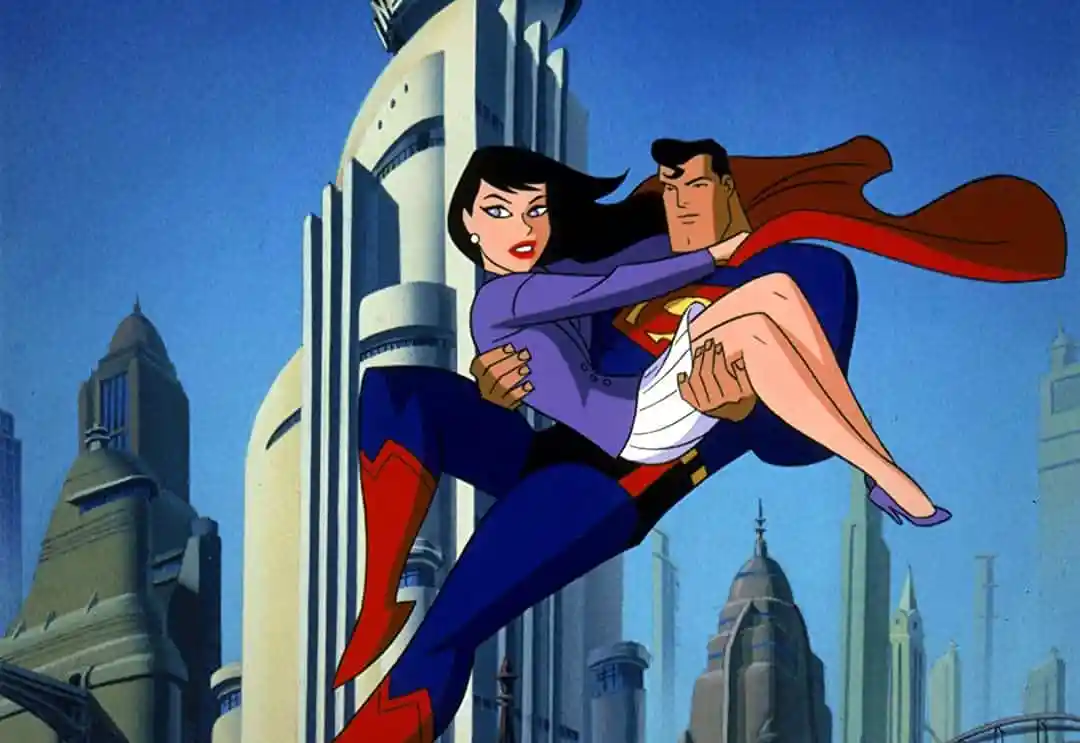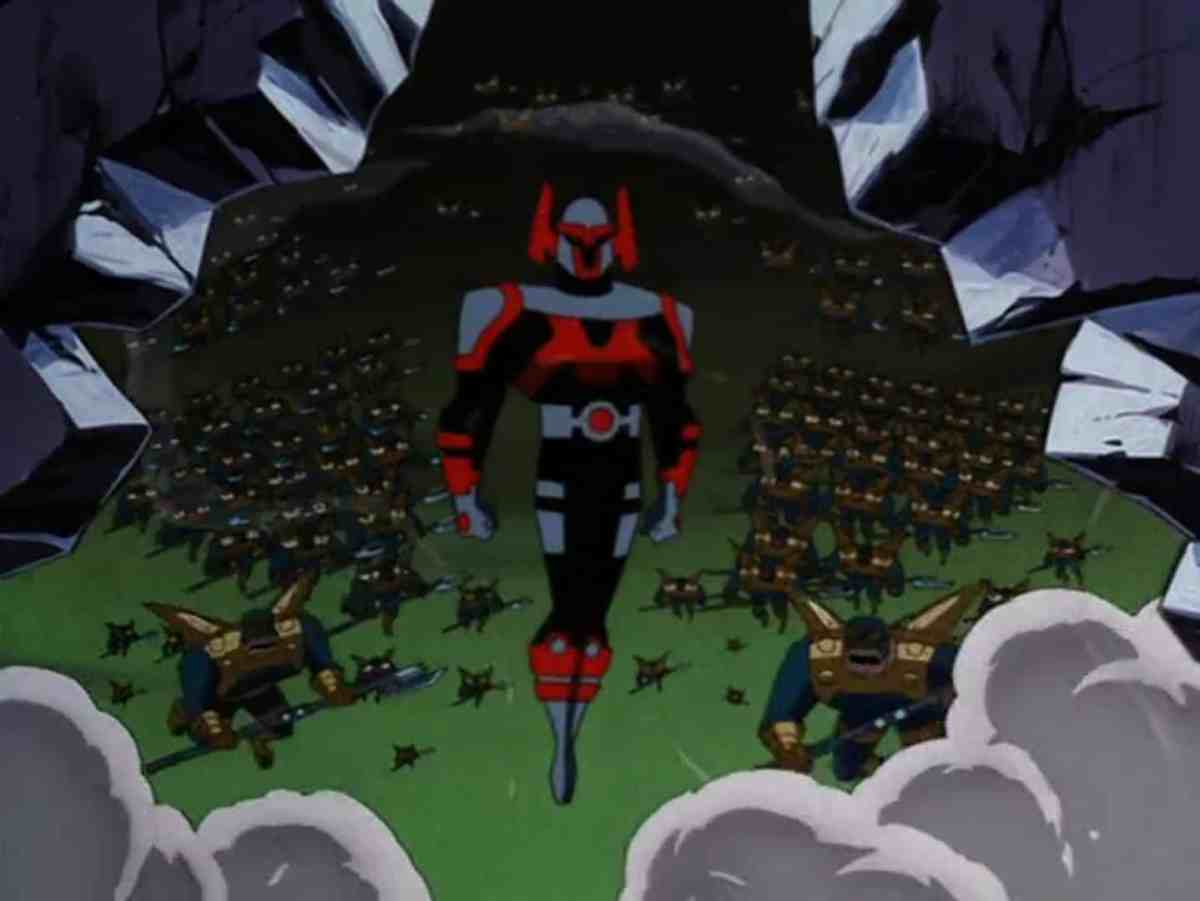Superman: The Animated Series arrived on HBO Max in March, remastered in high definition.
The arrival was somewhat overshadowed by all the excitement around Zack Snyder’s Justice League and its take on the Man of Steel. This is disappointing, but not unexpected. While the DC Animated Universe (the DCAU) is widely accepted as one of the best superhero adaptations in any medium, Superman: The Animated Series is often overlooked. It tends to get overshadowed in discussions by either Batman: The Animated Series or the two Justice League series.
Of course, it is easy to understand why those shows attract more attention. Even allowing for the sheer volume of Batman adaptations in film and television, Batman: The Animated Series is a landmark piece of pop culture. Similarly, both Justice League and Justice League Unlimited offered bold takes on a wide variety of classic comic book characters that remained true to their roots while also reinventing them where necessary.
However, Superman: The Animated Series offers an essential bridge between these two extremes of the DCAU. It provided an important framework for experimentation and innovation. It was also a space where the storytelling sensibilities of writers and artists like Bruce Timm and Paul Dini could evolve from the episodic adventures depicted in Batman: The Animated Series towards the long-form serialization that defined the two Justice League series.
Superman: The Animated Series is a much more serialized television series than Batman: The Animated Series had been. While individual episodes of Batman: The Animated Series like “His Silicon Soul” would occasionally build directly off previous adventures, and while certain villains like Two-Face (Richard Moll) would have a loose character arc across their appearances, Batman: The Animated Series was an easier show to drop into and out of than Superman: The Animated Series.

This is obvious even comparing the shows’ opening sequences. While the opening titles of Batman: The Animated Series have been (fairly) described as “a perfect introduction to Batman,” they are not an origin story. The title sequence of Batman: The Animated Series depicts Batman (Kevin Conroy) fully formed, attacking two robbers on the Gotham skyline and leaving them for the police to find. It is effectively a Batman adventure in miniature.
After years of watching Thomas and Martha Wayne die on camera, it may seem odd that an introduction to Batman should omit the broad outline of the character’s backstory. However, for decades this was how adaptations approached the hero. For example, the opening episode of 1966’s Batman features only a throwaway line from Bruce (Adam West) about how his parents “were murdered by dastardly criminals.”
In contrast, the opening titles of Superman: The Animated Series are not just an introduction to Superman (Tim Daly), but also provide an origin for the character. The sequence charts his history from the destruction of Krypton to his childhood in Smallville to his arrival in Metropolis. It is a linear narrative with a clear progression from start to finish. It’s comparable to Grant Morrison and Frank Quitely’s famous one-page, four-panel, eight-word introduction to the hero in All-Star Superman.
This aesthetic carried over to the shows themselves. The first episode of Batman: The Animated Series was “On Leather Wings,” a standalone adventure that pitted the Caped Crusader against third-tier villain Man-Bat (Marc Singer). While the show would offer flashbacks to Bruce’s childhood in episodes like “Beware the Gray Ghost” and pad out his backstory in Batman: Mask of the Phantasm, many of the adventures were designed to be watched and enjoyed in isolation.

In contrast, the first three episodes of Superman: The Animated Series form a three-act origin story. In a move that prefigures the prologue to Man of Steel, the first of those three parts unfolds entirely on Krypton and focuses on Superman’s father Jor-El (Christopher McDonald). It introduces elements that will come into play later in the season, such as the Kryptonian supercomputer Brainiac (Corey Burton) that arrives on Earth in “Stolen Memories.”
Over the course of its 54 episodes, Superman: The Animated Series developed recurring elements that would become a major part of the shared universe, like the dysfunctional dynamic between Lex Luthor (Clancy Brown) and Brainiac, or the threat posed by Darkseid (Michael Ironside) and the Fourth World. It also introduced elements that would become central to Justice League, such as the Green Lantern Corps, the Flash (Charlie Schlatter), and Aquaman (Miguel Ferrer).
There were several reasons for this shift in approach. Narratively, the Man of Tomorrow did not lend himself to episodic adventures as readily as the Dark Knight. Batman may have the best rogues’ gallery in comics, a “classic comic book coterie of evil.” He has enough interesting foes to sustain a “villain of the week” format for multiple seasons, as writers like Paul Dini offer compelling character studies of third-stringers like the Mad Hatter (Roddy McDowall) and Mister Freeze (Michael Ansara).
Superman has never had as deep a bench of potential antagonists and foils. Many of the weakest episodes of Superman: The Animated Series are those that try to build solo villain character studies around enemies like the Toyman (Bud Cort) or Parasite (Brion James). This isn’t to discount the show’s capacity to construct interesting standalones like “The Late Mr. Kent,” but the series worked best when it wasn’t trying to emulate the format of Batman: The Animated Series.

However, the shifting realities of television production and broadcasting were arguably also a factor. Batman: The Animated Series premiered on Fox Kids in September 1992, and the show was designed so that episodes could be broadcast out of order in syndication without potentially confusing or alienating audiences. Fans have tried to figure out a chronological viewing order for Batman: The Animated Series, but it can get complicated.
Superman: The Animated Series premiered in September 1996, as genre television was embracing serialization and growing increasingly confident in an audience’s ability to follow long-form arcs. Shows like Babylon 5, Star Trek: Deep Space Nine, and The X-Files were constructing long-running arcs that spanned multiple episodes and even seasons. While the continuity of Superman: The Animated Series was never that dense, it existed in that larger context.
This approach ultimately benefits Superman: The Animated Series. Its characters grow and evolve in a way that those on Batman: The Animated Series would not until the launch of Batman Beyond. This is particularly true of Superman himself, who has a complicated relationship with his adopted planet. The events of the series finale of Superman: The Animated Series ripple through into Justice League, informing both the character and the way that other characters perceive him.
In “Legacy,” Superman is captured and brainwashed by Darkseid. He becomes a leader in Darkseid’s army and launches an attack on Earth in Darkseid’s name. Although Superman inevitably breaks free of Darkseid’s control, this becomes a core part of his character arc. In Justice League Unlimited, this becomes a major justification for Amanda Waller’s (CCH Pounder) skepticism of superheroes. It also adds a great deal of shading to Superman’s character, as he tries to come to terms with it.

Coupled with the infamous “bat-embargo” that rendered a lot of the Batman cast off-limits to the production teams on Justice League and Justice League Unlimited, the attention to character work in development pushed Superman and his supporting cast to the forefront of the later spin-offs. While Batman spends large stretches of Justice League and Justice League Unlimited as a supporting character, in later episodes Superman (now voiced by George Newbern) and Lex Luthor get to take center stage.
Given that Superman is frequently criticized for being “supremely boring,” particularly in comparison to Batman, this approach to the character and his mythos paid dividends. By investing in long-form storytelling that built on the character’s history and experience, Superman: The Animated Series developed into a complex and multifaceted character with nuanced motivations and even imperfections. It remains one of the most compelling and engaging takes on the Man of Steel.
Superman: The Animated Series is often forgotten in discussions of great comic book adaptations. When it is mentioned, it can feel like an afterthought. After all, this high-definition remaster arrived after similar releases of Justice League, Justice League Unlimited, Batman: The Animated Series, and Batman Beyond. The only DCAU shows left to be remastered are more fringe series like Static Shock and The Zeta Project.
Still, Superman: The Animated Series deserves more recognition and respect. It is super.
